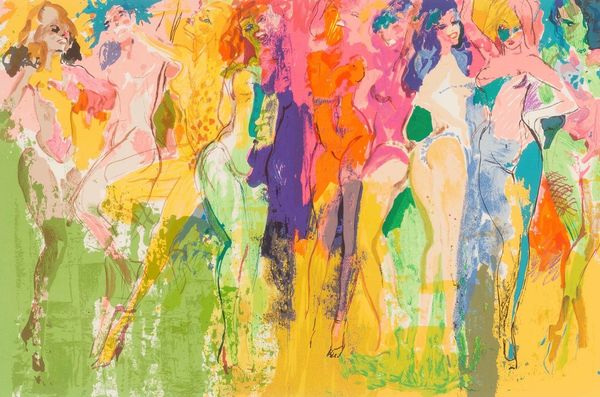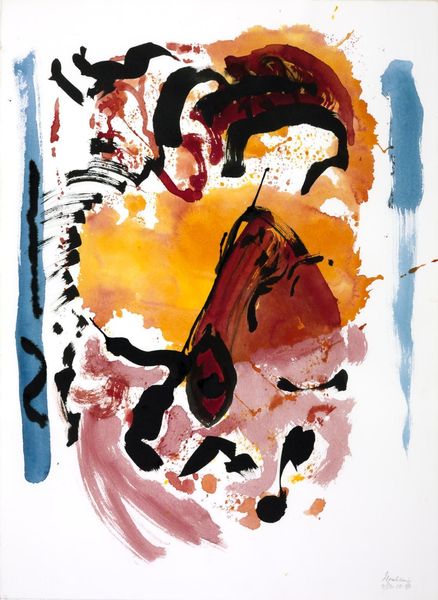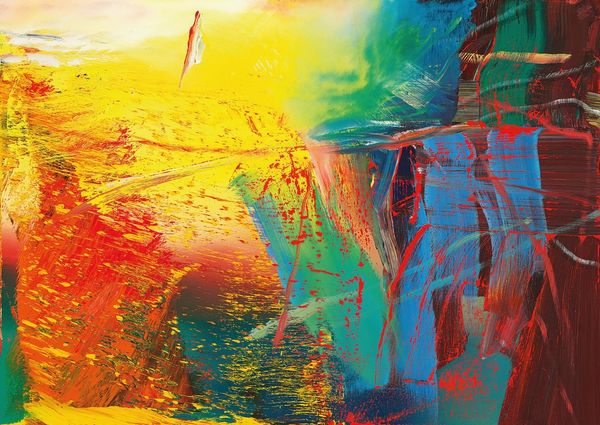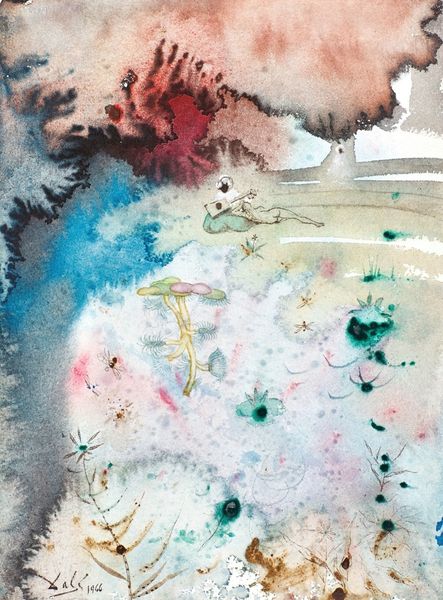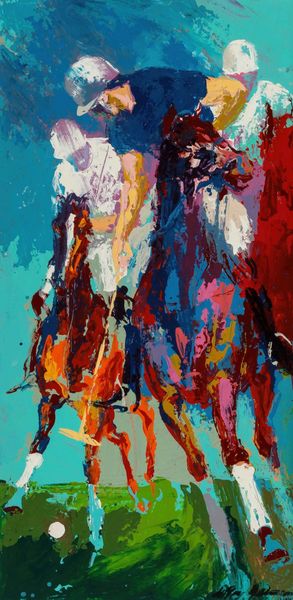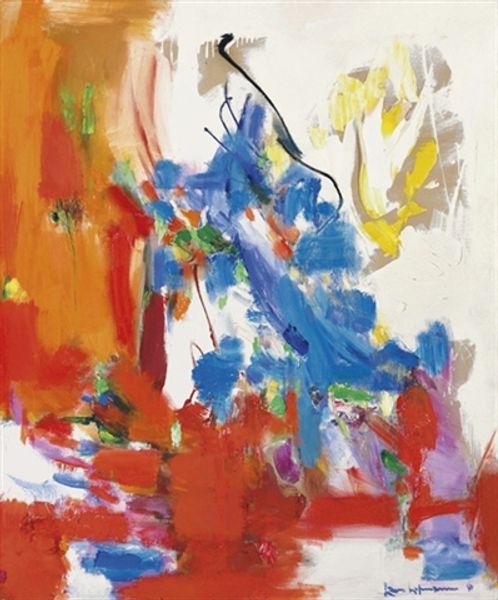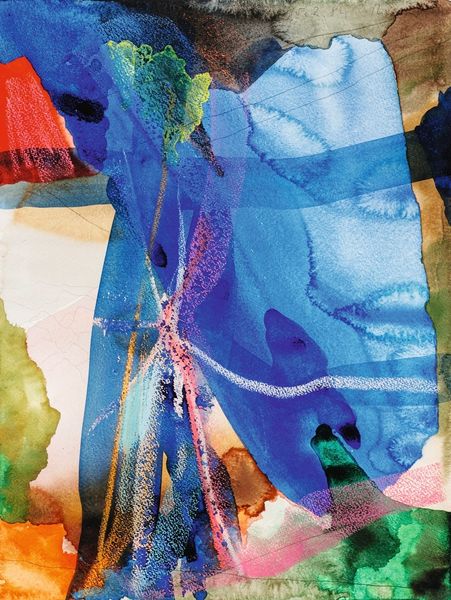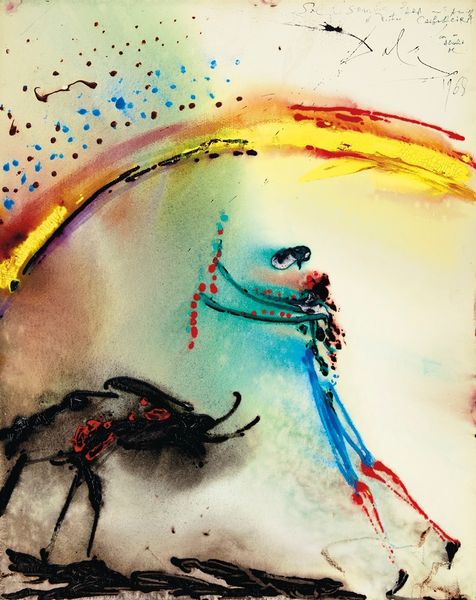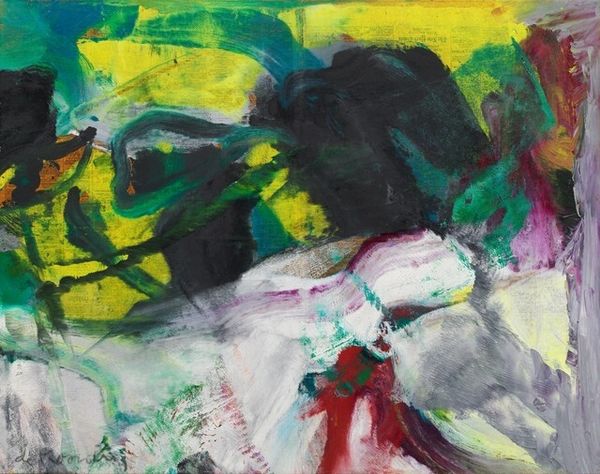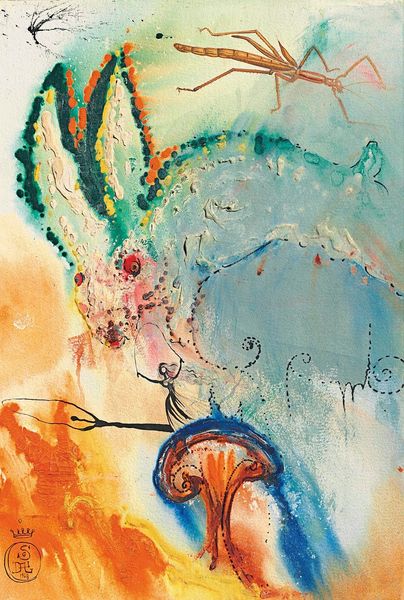
watercolor
#
portrait
#
narrative-art
#
figuration
#
watercolor
#
orientalism
#
history-painting
#
surrealism
Copyright: Modern Artists: Artvee
Editor: Here we have Salvador Dalí's watercolor "Arabes et Donyale Luna" from 1966. It's a bit dreamlike and the figures seem to blend into the background. How do you interpret this work, especially given its title? Curator: The title itself reveals a deliberate, if somewhat problematic, attempt to juxtapose the "Arab" world with the Black American model, Donyale Luna, who was becoming a fashion icon. How do you see this pairing working or not working within the image? Editor: Well, Luna appears central and almost ethereal, while the “Arabes” are more like background figures. Does Dalí reinforce or challenge Orientalist tropes in this painting? Curator: That's the critical question. The "Arabes," rendered in a rather indistinct way, risk perpetuating the historical tendency to exoticize and homogenize entire cultures. At the same time, Luna's assertive presence complicates a straightforward Orientalist reading. Consider the power dynamics at play when a Surrealist artist, rooted in European traditions, represents both a non-Western culture and a Black woman. Does the painting liberate or does it appropriate? Editor: It sounds like Dalí is walking a tightrope, potentially falling into stereotypical representations while also trying to celebrate Luna’s beauty. So is he subverting those historical images or reproducing them here? Curator: Exactly! The act of including Luna might be a commentary on Western beauty standards. And perhaps a challenge of race and identity through the lens of Surrealism. How can we, as contemporary viewers, responsibly engage with artworks like this, acknowledging their potential harm while also recognizing their complexity? Editor: I think it's about being critical of the historical context. Considering the artist's perspective, the subject, and how it all reflects larger cultural biases. It's definitely not just a pretty picture! Curator: Precisely! Examining how the legacy of colonialism and racism is so deeply ingrained in our visual culture is critical to our role as interpreters and custodians.
Comments
No comments
Be the first to comment and join the conversation on the ultimate creative platform.
